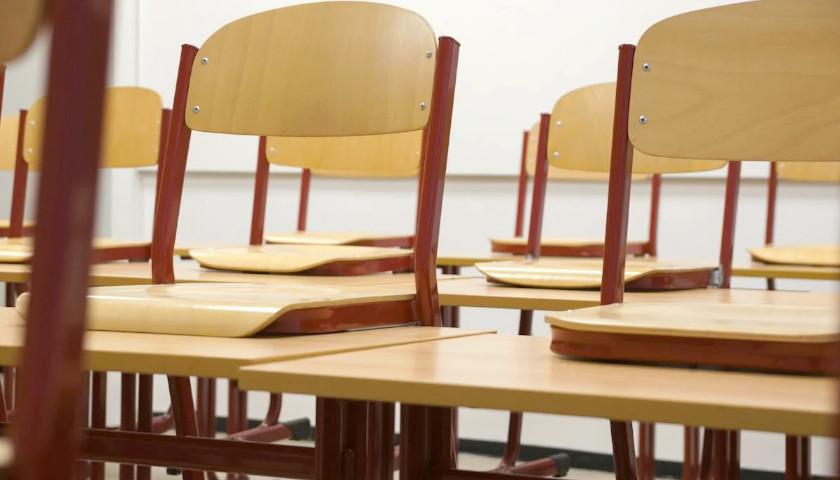A brief filed this week in Pennsylvania’s Commonwealth Court by a Harrisburg think tank argues the school-funding system the court recently found unconstitutional must change to provide educational choice.
In the amicus curiae filing, Commonwealth Foundation (CF) notes it has frequently studied K-12 education spending in the Keystone State since CF’s founding 35 years ago. The foundation’s analyses have determined that increases in spending don’t necessarily improve learning outcomes. CF posits policymakers should consider this finding in light of the recent court ruling deeming numerous districts underfunded and instructing a new system that funds them more bountifully.
In February, Judge Renee Cohn Jubelirer (R) issued her 778-page opinion addressing a case brought by six school districts, including the School District of Lancaster and the Wilkes-Barre Area School District, as well as several parents and nonprofits. Therein, she insisted that a revamped funding system is needed to satisfy the Pennsylvania Constitution’s requirement of a “thorough and efficient system of public education to serve the needs of the Commonwealth.”
Jubelirer also asserted that the status quo deprives students of state-guaranteed equal protection. She expressed discontent with the “wide disparities existing between low-wealth and high-wealth school districts.” It is now up to state lawmakers to craft new policy in response to the court’s order, and it is far from certain what that policy will look like.
CF’s brief faulted the judge for attributing academic achievement gaps between districts in different income strata to financial concerns. CF attorneys Jonathan Goldstein and Shawn Rodgers argued she should have considered the effect of qualitative policy decisions, particularly school choice.
“Based upon Judge Cohn Jubelirer’s analysis and discussion of the facts, Respondents and other stakeholders could wrongly infer that altering district level funding is the only appropriate remedy for the disparities in achievement across high-wealth and low-wealth districts,” Goldstein and Rodgers wrote. “This inference, however, is not correct because it fails to focus on the rights of individual students, overemphasizes district funding, and has no limiting principle as to how much funding is enough. Judge Cohn Jubelirer dramatically fails to account for other public policy changes that could close the achievement gap between high-wealth and low-wealth Pennsylvania school districts, including offering individual students and parents meaningful choices about where and how students are educated.”
CF also criticized Jubelirer for not articulating a clear standard to determine whether whatever remedy legislators come up with will satisfy her command to reform the state funding system.
The think tank cautioned that policymakers should observe how complainant school districts’ funding stacks up against the state average. While districts’ spending per pupil can vary widely, CF notes that the per-pupil amounts spent by four of the six plaintiff districts exceeded the state average of $19,966 during the 2020-21 school year.
Another aspect of Jubelirer’s order to which the foundation objected concerned the lack of a prescribed remedy to the disparity in financial resources among school districts. The bulk of current revenues for Pennsylvania’s public schools largely come from real-estate taxes levied by the districts; combined state and federal sources fund less than half of public K-12 costs (though state support rose sharply since last school year). But the judge did not suggest capping district property-tax revenue.
“This ensures the identified disparities will likely continue, while simultaneously directing that State-level funding increase exponentially in an effort to erase such disparities,” Goldstein and Rodgers wrote.
The attorneys conclude that evidence points to school choice as the most powerful solution to educational inequality. CF’s polling, released last May, found 84 percent of Pennsylvania’s registered voters support making Education Opportunity Accounts available to families. And an edchoice.org poll conducted in 2020 discovered that only 41 percent of parents would send their child to a public school if they faced no cost or transportation barriers.
CF further cited a review of empirical research on school-choice outcomes performed by EdChoice fellow Greg Forster which found that most studies indicate choice programs improve students’ scholastic achievement.
Pennsylvania funds K-12 scholarships for some students through the state’s Educational Improvement Tax Credit and Opportunity Scholarship Tax Credit, but spending caps on those programs forced the denial of 76,031 applications from 2012 to 2021. That number represents 55 percent of applications submitted.
“Pennsylvania’s education system suffers not from a lack of funding but a lack of options,” Nathan Benefield, CF’s senior vice president, lamented in a statement. “It’s difficult to imagine how we can guarantee all students meaningful opportunity if their only option is a low-performing school assigned to them by their zip code.”
– – –
Bradley Vasoli is managing editor of The Pennsylvania Daily Star. Follow Brad on Twitter at @BVasoli. Email tips to [email protected].
Photo “Child at School” by akshayapatra.








